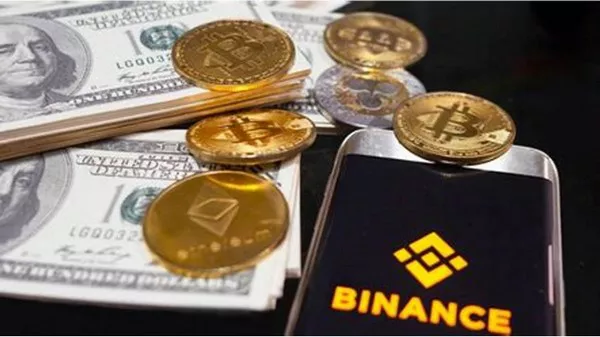Cryptocurrency has evolved significantly since the inception of Bitcoin in 2009. Today, there are thousands of cryptocurrencies, each with unique features, use cases, and technological foundations. This article provides a comprehensive overview of the different types of cryptocurrencies, their characteristics, and their roles within the broader digital economy.
1. Bitcoin (BTC) – The Pioneer
Bitcoin, often referred to as BTC, is the first and most well-known cryptocurrency. Created by an anonymous entity known as Satoshi Nakamoto, Bitcoin introduced the world to the concept of decentralized digital currency. It operates on a peer-to-peer network without the need for intermediaries, like banks or governments.
Characteristics of Bitcoin
Decentralization: Bitcoin is powered by a decentralized network of nodes, ensuring no single entity controls it.
Security: It uses cryptographic algorithms to secure transactions.
Scarcity: With a total supply cap of 21 million coins, Bitcoin is often compared to gold for its scarcity.
Transparency: All transactions are recorded on a public ledger known as the blockchain.
Immutability: Once a transaction is confirmed, it cannot be altered or deleted.
Bitcoin’s primary use case is as a store of value and a medium of exchange. It has gained significant adoption as “digital gold,” a hedge against inflation, and an asset for investment.
2. Altcoins – Beyond Bitcoin
Altcoins, or alternative coins, refer to all cryptocurrencies other than Bitcoin. They were created to address perceived limitations in Bitcoin’s design or to serve different purposes. Some prominent altcoins include Ethereum, Ripple, Litecoin, and Cardano.
Ethereum (ETH)
Ethereum is more than just a digital currency. It is a decentralized platform that enables developers to build and deploy smart contracts and decentralized applications (dApps). Founded by Vitalik Buterin in 2015, Ethereum introduced the concept of programmable money.
Characteristics of Ethereum
Smart Contracts: Self-executing contracts with the terms directly written into code.
dApps: Decentralized applications that run on the Ethereum blockchain.
ERC-20 Tokens: Standardized tokens created on the Ethereum network, which form the basis for many other cryptocurrencies and projects.
DeFi: Ethereum is the backbone of the decentralized finance (DeFi) movement, providing the infrastructure for financial services without intermediaries.
Ripple (XRP)
Ripple aims to facilitate fast and low-cost international payments. Unlike Bitcoin, Ripple is not mined; all XRP tokens were pre-mined at launch. Ripple Labs, the company behind XRP, focuses on partnerships with financial institutions to improve cross-border payment efficiency.
Characteristics of Ripple
Speed: Transactions settle within seconds.
Cost: Very low transaction fees compared to traditional financial systems.
Consensus Algorithm: Uses a unique consensus algorithm instead of proof-of-work (PoW) or proof-of-stake (PoS).
Litecoin (LTC)
Often referred to as the “silver to Bitcoin’s gold,” Litecoin was created by Charlie Lee in 2011. It is designed to offer faster transaction times and a different hashing algorithm.
Characteristics of Litecoin
Faster Block Generation: Blocks are generated every 2.5 minutes, compared to Bitcoin’s 10 minutes.
Scrypt Algorithm: Uses the Scrypt hashing algorithm, which is different from Bitcoin’s SHA-256.
Lower Fees: Generally lower transaction fees compared to Bitcoin.
Cardano (ADA)
Cardano is a third-generation blockchain platform focused on sustainability, scalability, and interoperability. Founded by Charles Hoskinson, a co-founder of Ethereum, Cardano uses a research-driven approach to development.
Characteristics of Cardano
Proof-of-Stake (PoS): Uses a PoS consensus mechanism called Ouroboros.
Layered Architecture: Separates the ledger of account values from the reason why values are moved.
Scalability and Interoperability: Designed to handle large volumes of transactions and work across different blockchain networks.
3. Stablecoins – Stability in Volatility
Stablecoins are cryptocurrencies designed to minimize price volatility by pegging their value to a stable asset, such as a fiat currency (like the US Dollar), commodities (like gold), or other cryptocurrencies.
Types of Stablecoins
Fiat-Collateralized Stablecoins: Backed by fiat currency reserves. Examples include Tether (USDT) and USD Coin (USDC).
Crypto-Collateralized Stablecoins: Backed by other cryptocurrencies. An example is DAI, which is pegged to the US Dollar but collateralized by Ethereum.
Algorithmic Stablecoins: Use algorithms to manage the supply and stabilize the value. Examples include Ampleforth (AMPL) and Terra (LUNA).
Characteristics of Stablecoins
Price Stability: Aim to maintain a stable value to facilitate daily transactions.
Pegging Mechanism: Use various methods to maintain their peg, including reserves and algorithmic adjustments.
Adoption in DeFi: Widely used in decentralized finance for lending, borrowing, and trading without exposure to volatility.
4. Privacy Coins – Ensuring Anonymity
Privacy coins are designed to provide enhanced anonymity and privacy for transactions. Unlike Bitcoin, where transactions are traceable on the public ledger, privacy coins employ various techniques to obscure transaction details.
Monero (XMR)
Monero is one of the most well-known privacy coins. It uses ring signatures, stealth addresses, and confidential transactions to ensure complete privacy.
Characteristics of Monero
Ring Signatures: Mixes the sender’s transaction with a group of others, making it difficult to trace.
Stealth Addresses: Generates one-time addresses for each transaction.
Confidential Transactions: Conceals the transaction amount.
Zcash (ZEC)
Zcash offers optional privacy features using a technology called zk-SNARKs (Zero-Knowledge Succinct Non-Interactive Arguments of Knowledge). This allows users to shield transactions.
Characteristics of Zcash
zk-SNARKs: Allows transactions to be verified without revealing any details.
Selective Disclosure: Users can choose to reveal transaction details for auditing or regulatory compliance.
5. Utility Tokens – Powering Ecosystems
Utility tokens are designed to provide access to a product or service within a specific blockchain ecosystem. They are not intended as investments but rather as a means to interact with the platform.
Binance Coin (BNB)
BNB is the native token of the Binance exchange. It is used to pay for trading fees, participate in token sales on Binance Launchpad, and more.
Characteristics of Binance Coin
Fee Reduction: Users get discounts on trading fees when using BNB.
Token Burns: Binance periodically burns a portion of BNB to reduce supply and increase value.
Ecosystem Integration: BNB is used across various Binance services, including the Binance Smart Chain.
Chainlink (LINK)
Chainlink is a decentralized oracle network that enables smart contracts to securely interact with external data sources. LINK is the native token used to pay for services within the Chainlink network.
Characteristics of Chainlink
Decentralized Oracles: Provides reliable, tamper-proof data for smart contracts.
Node Operator Incentives: LINK tokens are used to compensate node operators for providing data.
6. Governance Tokens – Decentralized Decision-Making
Governance tokens grant holders voting rights in the decision-making processes of a decentralized platform. They enable users to influence the future direction of the project.
Maker (MKR)
MKR is the governance token of the MakerDAO platform, which manages the stablecoin DAI. MKR holders vote on key parameters of the system.
Characteristics of Maker
Collateralized Debt Positions (CDPs): Users create DAI by locking up collateral in CDPs.
Governance: MKR holders vote on changes to the protocol, such as risk parameters and fee adjustments.
Uniswap (UNI)
Uniswap is a decentralized exchange (DEX) that uses an automated market-making (AMM) mechanism. UNI is the governance token that allows users to propose and vote on protocol changes.
Characteristics of Uniswap
AMM: Uses liquidity pools instead of order books for trading.
Liquidity Mining: Users can earn UNI tokens by providing liquidity to the platform.
Decentralized Governance: UNI holders can vote on proposals affecting the future of the platform.
7. Security Tokens – Digitizing Traditional Assets
Security tokens represent ownership in an asset, such as real estate, stocks, or bonds, and are subject to federal securities regulations. They offer a way to tokenize traditional financial assets.
Securitize (DS Protocol)
Securitize provides a platform for issuing and managing security tokens. Its DS Protocol ensures compliance with regulations across various jurisdictions.
Characteristics of Security Tokens
Regulatory Compliance: Must adhere to securities laws, including KYC/AML requirements.
Fractional Ownership: Allows for the fractionalization of assets, enabling broader access to investments.
Liquidity: Can be traded on secondary markets, providing liquidity to traditionally illiquid assets.
8. NFTs – Unique Digital Assets
Non-Fungible Tokens (NFTs) are unique digital assets that represent ownership of a specific item or piece of content, such as art, music, or virtual real estate. Unlike cryptocurrencies, which are fungible and identical, NFTs are one-of-a-kind.
Characteristics of NFTs
Uniqueness: Each NFT has a unique identifier and cannot be replicated.
Ownership: Ownership is verifiable on the blockchain.
Interoperability: Can be used across different platforms and applications.
Popular NFT Platforms
Ethereum: The majority of NFTs are created and traded on the Ethereum blockchain.
Flow: A blockchain designed specifically for NFT and gaming use cases, created by Dapper Labs.
Tezos: An energy-efficient blockchain gaining traction in the NFT space due to its lower environmental impact.
9. Meme Coins – Community and Fun
Meme coins are a subcategory of cryptocurrencies that originated as jokes or memes but have gained substantial communities and market value. The most famous example is Dogecoin (DOGE).
Dogecoin (DOGE)
Dogecoin started as a joke based on the popular “Doge” meme but has grown into a widely recognized cryptocurrency with a large and active community.
Characteristics of Dogecoin
Inflationary Supply: Unlike Bitcoin, Dogecoin has no supply cap, which means an ever-increasing number of coins.
Community-Driven: Strong focus on community involvement and charitable causes.
Low Transaction Fees: Often used for tipping and small transactions due to low fees.
Shiba Inu (SHIB)
Shiba Inu is another meme coin that has gained significant popularity. It brands itself as the “Dogecoin Killer” and has built a large community around its ecosystem.
Characteristics of Shiba Inu
Ecosystem Tokens: Includes multiple tokens (SHIB, LEASH, BONE) with different roles in the ecosystem.
Decentralized Exchange (ShibaSwap): A decentralized platform for trading and staking SHIB and related tokens.
Community and Marketing: Relies heavily on community engagement and viral marketing.
See also: When Did China Ban Crypto
Conclusion
The cryptocurrency landscape is vast and continually evolving. From the pioneering Bitcoin to the innovative Ethereum, privacy-focused Monero, and community-driven Dogecoin, each type of cryptocurrency serves a unique purpose and caters to different needs within the digital economy.
As the technology matures and adoption increases, the diversity of cryptocurrencies will likely continue to grow, offering even more specialized solutions and opportunities. Understanding the various types of cryptocurrencies and their characteristics is crucial for navigating this dynamic and rapidly changing space. Whether you’re an investor, developer, or enthusiast, staying informed about these digital assets will help you make better decisions and fully leverage the potential of blockchain technology.
Related topics:
What Is The Tax On Selling Cryptocurrency
Is Cryptocurrency Still a Good Investment?

















